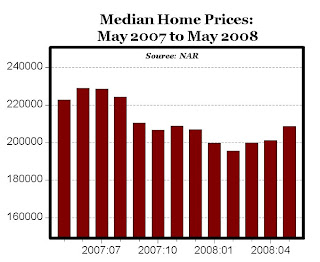The Business Cycle Dating Committee of the National Bureau of Economic Research met by conference call on Friday, November 28. The committee maintains a chronology of the beginning and ending dates (months and quarters) of U.S. recessions.
The committee determined that a peak in economic activity occurred in the U.S. economy in December 2007. The peak marks the end of the expansion that began in November 2001 and the beginning of a recession. The expansion lasted 73 months; the previous expansion of the 1990s lasted 120 months.
The NBER’s historical business cycle data show that the average economic expansion since WWII lasted 57 months (4 years, 9 months). In that case, the current expansion is more than two years longer than the average expansion, depending on when the NBER decides the next recession starts.
For the complete NBER release, click here.
So the obvious question is…now what? Or maybe…so what?
Well, I think it’s imperative that we keep the announcement in perspective in that it simply confirms what many have been saying/feeling for some time now. It’s just that economists need data to confirm economic phenomena.
Your downturn strategy should remain intact, … what do you mean you don’t have one? Click here to review previous strategy-related posts to get you started.
UPDATE: I was asked this morning: Why did it take so long for the recession to become “official”?
Back in the 1920s, the NBER began a research program into our economic history, resulting in a set of dates of economic peaks and troughs. NBER has continued to update this chronology. NBER is an academic organization, and its business cycle dating program is a service to the scholarly research community. It is not meant to be a current commentary on the economy nor a forecast of future activity.
The committee wrestles with two issues when it sees a decline in economic activity. First, it asks if the downturn we’re seeing will survive the inevitable data revisions. Second, if economic activity turns up tomorrow, will the downturn be significant enough that we will call this event a recession. Although it has seemed obvious to many that this is a recession, that’s because no one expected a sudden turnaround. However, the committee does not use such a forecast in its determination. And being academics, there’s really no hurry.
While wrestling with these two issues, the committee also deals with data that may be telling different stories. One reason it has not been obvious to me that we’re in recession is that first and second quarter GDP growth were positive, with Q2 pretty strong. It’s unusual to see such strong growth in the middle of a recession. However, the monthly data that the committee focuses on all showed pronounced peaks.
UPDATE 2: The next question I was asked was: So, when will the recession end? I could take the easy road out and say “see answer above.” Instead, I’ll opt for the second easiest answer and say that there are: (1) a lot of differing viewpoints out there, and (2) there are a lot of unknowns in the mix, and (3) the range of time frames I am hearing put us in recovery mode anywhere from 2nd quarter 2009 to late 2010. Needless to say, a rocket scientist could probably have figured that out. Personally, I think it’s closer to the former than the latter time period.




